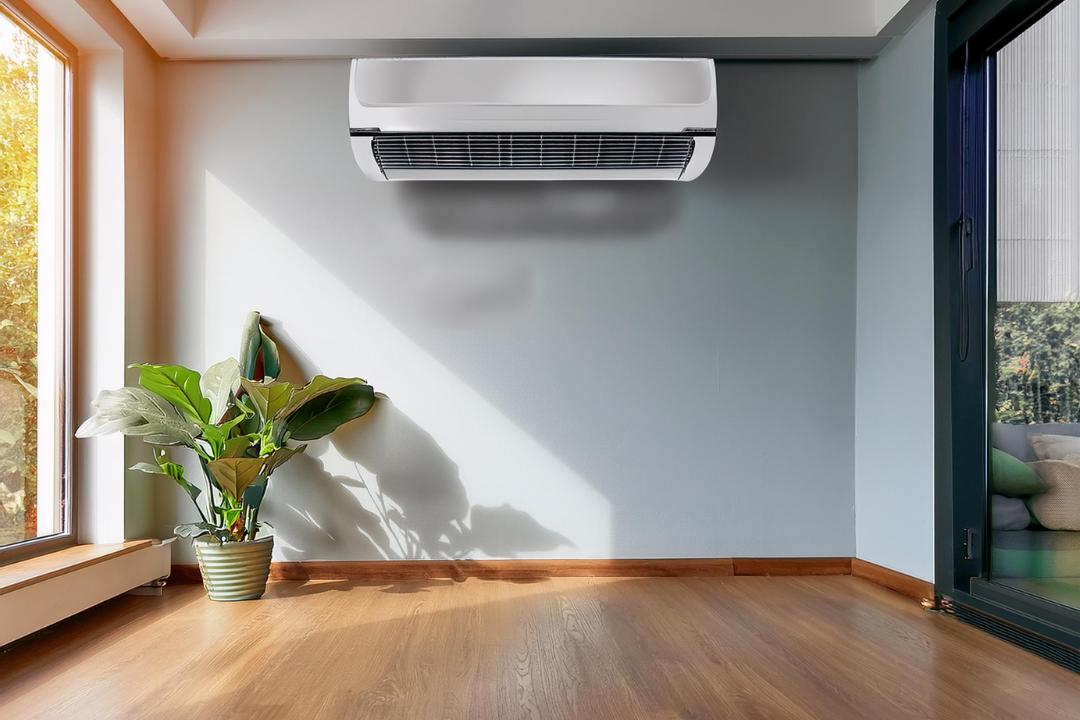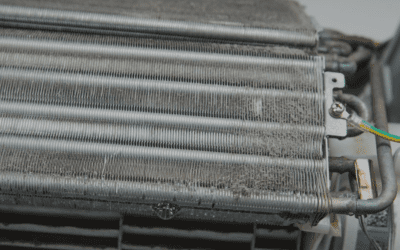Every air conditioner comes with its own features, but a ductless AC stands out for three main reasons: convenience, precise comfort control, and reduced cooling costs. It has three key components: an outdoor condenser unit that generates cold air, an indoor unit that distributes the cool air, and refrigerant lines that connect the two, enabling the transfer of cool air between them. The best part? These AC systems don’t even need ductwork to circulate the cool air. However, there are various other options available, including wall-mounted units, ceiling cassette units, floor-mounted units, and both single-zone and multi-zone systems. Choosing the right one from these can be tricky. The following discussion on different types and the important factors to consider when choosing the right ductless AC system for your home should prove helpful.
Types of Ductless AC Systems with Their Purposes
1. Wall-Mounted Units
Wall-mounted ductless AC units are the most common type of mini-split system. These units are installed high on a wall near the ceiling, where they can efficiently distribute conditioned air throughout the room. It is designed to provide effective cooling or heating for a single room or a defined area. Their design allows for optimal air circulation, as the elevated position helps to evenly spread the air, ensuring that the entire space is covered. These units are perfect for retrofitting into existing structures where ductwork is either unusable or impossible. They are known for their ease of installation, quiet operation, and energy efficiency, which makes them a popular choice for homeowners looking to improve comfort without any renovations. To install, you only need a small hole for the refrigerant line and electrical connections, which minimizes the impact on the structure.
2. Ceiling Cassette Units
These units are installed directly into the ceiling, so the only part you see is a stylish grille that fits neatly into the room’s design. These units are smart; they come with sensors that can detect changes in the room’s temperature. Ceiling Cassette AC is perfect for larger rooms or open spaces where you want even cooling throughout. It provides 360-degree air distribution, meaning the cool air reaches every corner of the room without leaving any areas too hot or too cold. Because it’s mounted in the ceiling, it’s perfect for rooms with limited wall space or where you want to keep the design clean and modern.
3. Floor-Mounted Units
If your house has low ceilings or doesn’t have the wall space to mount an AC unit higher up, a floor-mounted ductless AC might be exactly what you need. It is designed to be installed at the bottom of a wall, close to the floor. One of the key benefits of a floor-mounted unit is that it can quickly cool a room since it’s positioned closer to where people are usually sitting or standing. This makes it perfect for spaces where comfort needs to be achieved quickly, like in rooms used by elderly people or where children play. Also, their low height makes them a great option for rooms with large windows or sloped ceilings where other types of AC units might not fit well.
4. Single-Zone vs. Multi-Zone Systems
Single-zone ductless AC systems are designed to control the temperature in just one room or area, while multi-zone systems can manage the climate in multiple rooms or areas simultaneously. The purpose of a single-zone system is to provide targeted comfort in a specific space, making it an ideal solution for smaller homes, apartments, or additions where centralized HVAC is not required. These systems are more affordable and simpler to install than multi-zone systems. In contrast, multi-zone systems provide the flexibility of controlling the temperature in different rooms independently, which is useful in larger homes with varying heating and cooling needs. Each zone can be customized to the occupant’s preference, enhancing comfort and energy efficiency. Ductless AC systems for homes with multi-zone systems are perfect for households where different areas have different usage patterns, allowing for individualized climate control without the need for separate HVAC systems for each area.
Key Factors to Consider for Choosing the Perfect Ductless AC
Assessing Your Home’s Cooling Needs
Before choosing a ductless AC, it’s essential to check your home’s specific cooling requirements. This involves determining the number of rooms you want to cool, their sizes, and the overall layout of your space. Also, understanding your cooling needs will help you select the right size of ductless AC system that provides comfort without unnecessary energy consumption.
Energy efficiency (SEER rating)
The SEER (Seasonal Energy Efficiency Ratio) rating measures the efficiency of an air conditioning system over an entire cooling season. A higher SEER rating can save you an amount on energy bills, even if it costs more upfront. When selecting a ductless AC, aim for a unit with a SEER rating of at least 14 or higher. This ensures that the system is both cost-effective and environmentally friendly, reducing your carbon footprint while keeping your home cool.
Noise levels
Noise levels are an important consideration when choosing a ductless AC, especially if you plan to install the unit in a bedroom or living area. Ductless systems are generally quieter than traditional central air systems, with most units operating at sound levels between 19 and 34 decibels. For comparison, a whisper is about 30 decibels. Choosing a ductless AC with low noise levels ensures a comfortable environment without the distraction of loud operation, allowing you to enjoy a peaceful and cool space.
Climate
The climate you live in directly impacts how much cooling or heating power you’ll need. In hot, humid climates, a more powerful system is necessary to remove the heat and humidity effectively. Conversely, in milder climates, you can opt for a less powerful unit, which can save on both initial costs and ongoing energy expenses. A system that can handle both cooling and heating is essential in areas with significant temperature variations, ensuring year-round comfort.
Age and Insulation
Understanding your home’s insulation helps in selecting a unit that can handle your home’s specific demands without wasting energy. Older homes have less effective insulation, so they let more heat in during the summer and let more heat escape in the winter. This puts extra strain on your AC system, which requires a more powerful unit to maintain comfort. However, well-insulated homes retain temperature better, allowing a smaller, more energy-efficient system to suffice.
Conclusion
To choose the right type of ductless AC system, you have to carefully consider the above mentioned factors like cooling requirements, energy efficiency, noise levels, and other features. By thoughtfully considering these factors, homeowners can get efficient cooling and improved comfort in their homes. It’s important to focus on energy-efficient models, search for reliable brands, and take professional guidance for ductless AC services. With careful planning and informed choices, you can reap the long-term benefits of a well-selected air conditioning system.






